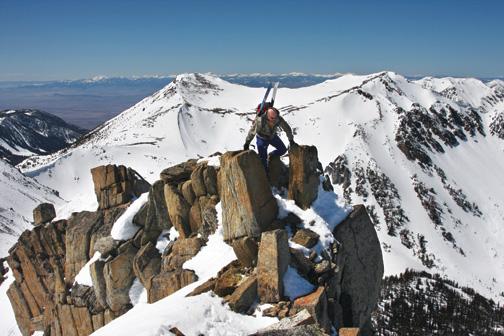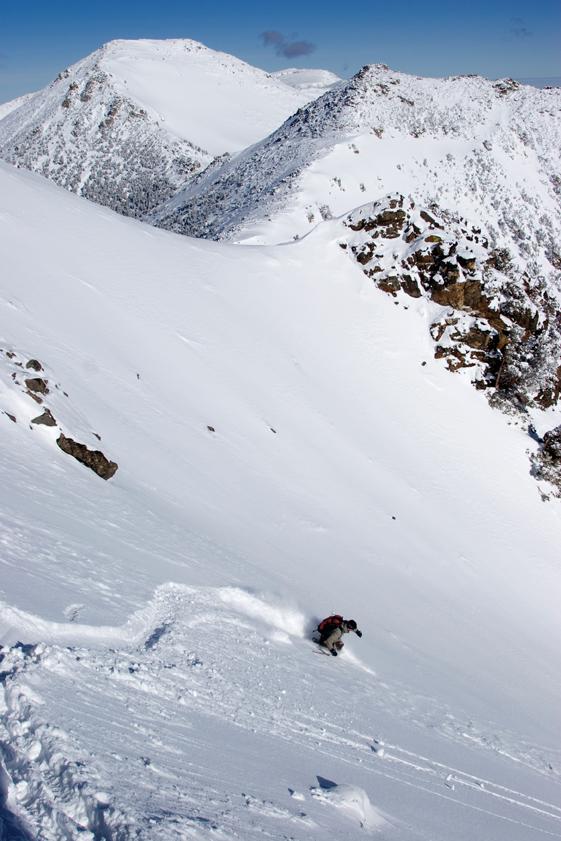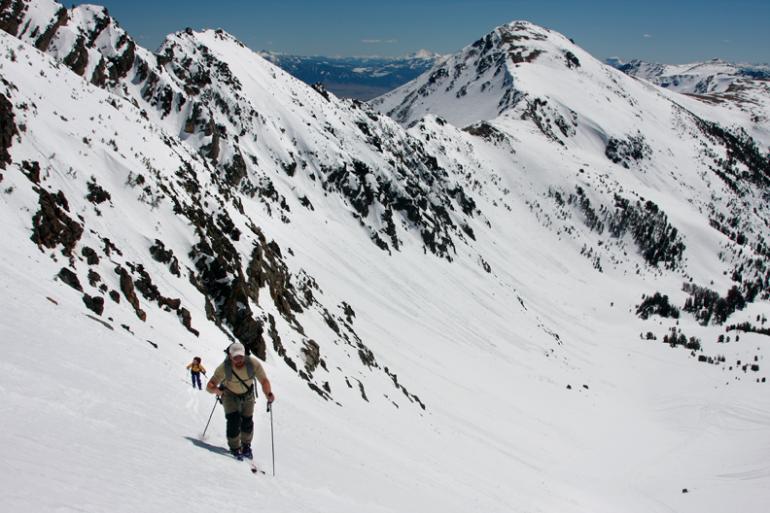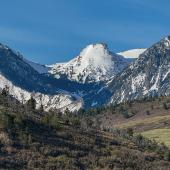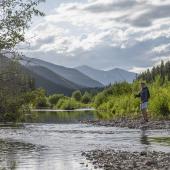Yurts So Good
Comfy digs and steep lines at the Bell Lake Yurt.
It’s not hard to understand why most people don't take ski-camping trips in the winter. It can be uncomfortable: alternately sweating and freezing, then more freezing. It takes some skill, and nature discriminates against the unprepared. Camping out in the winter can also be really gear-intensive; you generally need good clothing and boots, a good sleeping bag, a tent, a stove, and cookware. And the lighter and tougher you want it, the more expensive it is. So, when I got an invitation late last winter to go a long, backcountry ski trip in the Tobacco Roots, I was excited but a little daunted. But the clincher was that we had a yurt lined up.
A yurt? That sounds a whole lot better. No tent, no cooking gear, and after a day of snow frolic, a warm, expansive place to hang out, eat, and sleep. Luxurious.
The Bell Lake Yurt sits at about 8,500 feet near Bell Lake, which is at the base of the 9,700-foot Branham Peak cirque about five miles west of Harrison. The yurt, operated by Montana Alpine Adventures, is about 20 feet in diameter, which they say holds eight people fairly comfortably. For us four skiers and two dogs, it was palatial. It was a gentle four- to six-mile skin, gaining a couple thousand feet, to the yurt from where I left my truck. This was about a half-mile from where my friends had gotten their vehicle stuck in the deep, soft snow.
When we set out, the snow was pretty sloppy, but firmed up as we gained altitude. After a three-hour skin up to the yurt, Cosmo-dog and I arrived well after dark. We were pretty beat, so the glow of the yurt with woodsmoke curling through the trees was quite a lovely site to behold. The boys already had a nice dinner ready with deer sausage, red pepper penne, parmesan, and wine. It beats the Powerbar, beef jerky, and melted-snow dinner of my past ski-camping trips. The old dogs got their food, which they always seem unimpressed with, and went straight to bed as we plotted the next day's turns.
The plan we came up with gave me immediate heartburn. The young, hardcore skier, Simon, really wanted to ski some steep, narrow chutes in the range across from the yurt. There was a lot of moderate terrain in the cirque, and it looked spectacular, but the whippersnapper insisted on the steep lines on the other ridge. A few of us exchanged looks but no one balked.
I should ski more before these trips, work out more, do lunges, and not be such a slug, I thought. Next year, for sure. The dinner sat hard in my belly as I tried to sleep. In the morning, everyone was quiet as we ate a light breakfast of yogurt, fruit, and granola and watched the sun come up over the peaks. It illuminated the dramatic chutes we'd soon be coming down—hopefully upright and not tumbling. We put skins on and left the warm yurt behind.
The snow was still hard as we skinned up a mellow ridge, stopping to rest every half hour or so. Within a couple of hours we were on a large saddle a thousand feet above the yurt. We rested for a bit, then did an easy ski off the backside bowl, skinned back up and relaxed, waiting for the snow to soften a bit. The view was extraordinary. We ticked off the mountain ranges in the white panorama before us: Centennials, Taylor-Hilgards, Lone Peak, Spanish Peaks, Bridgers, Absarokas, Elkhorns. Each stunning and each with its own adventures. And now we were off to ours: the long climb and crawl along the knife-edged ridge to the top of the chutes.
We strapped skis on our backs and bootpacked up to the rocky ridge. With a steady wind from the south and a thousand feet of freefall on either side of the arms-length-wide path, we moved slowly. Halfway across, a six-foot gap in the rocks blocked us. We planned to toss the packs, then jump and land on the canted, loose snow pile on the other side. I balked and climbed down the rock below, making my way. It was equally dubious, but I'll trust rock over spring snow any day.
We finally arrived at the chutes, and they were as steep from the top as they looked from the ground. Which, to me, was really steep. Steepness is a hard thing to relate, hard with description, hard with photography, and often overstated. Fifty degrees is really quite steep. It's not rope-up, Teton-Gravity-Research-films steep, but it's very steep for most skiers. Certainly it was for me, in skinny telemark skis older than the young guy with us, who was now clicked and locked in his burly AT setup. He nodded, then jumped in, losing four feet of vertical with every jump, swiveling and gracefully making his way along the only line there was: straight down. He slipped at a constriction not much wider than his skis and we held our breath. He recovered, took some deep breaths, then continued jump-turning down the bobsled chute.
We went on to the neighboring, slightly wider chute and quickly geared up. Mike jumped in first. His first few turns were a little shaky, but he soon found his rhythm and was a hundred feet down in just a few minutes. He climbed up the steep side walls of the chute, out of the avalanche slide path, then motioned to me for my turn. Past my skis, I could see the yurt—so warm, so comfortable, and so very far below.
Yurts and backcountry huts are available year-round throughout much of the state. To learn more, visit wintermt.com and click on “Things to Do”; yurt info is under the “Scenic Adventures” section. For more about the Bell Lake Yurt, visit skimba.com.

